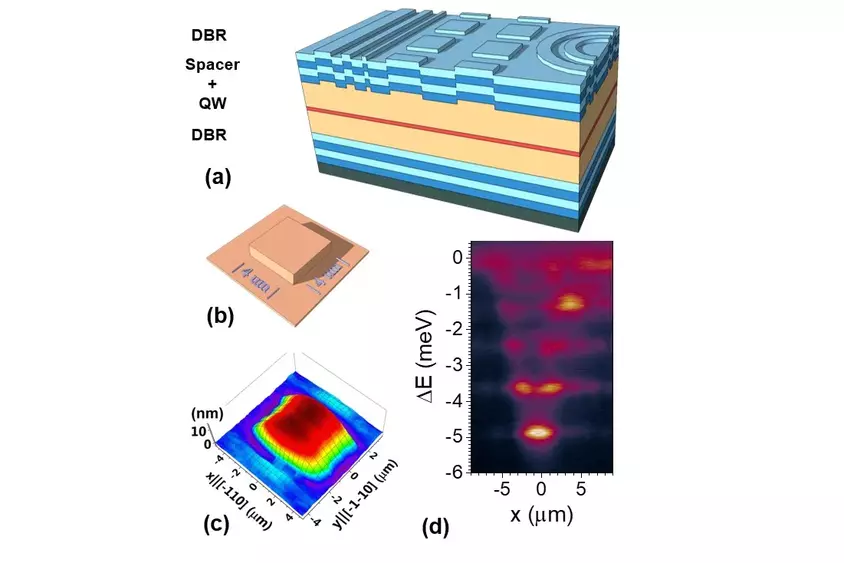Quantum confinement of exciton-polaritons in a structured (Al,Ga)As microcavity
31.05.2018
Interactions of light and material excitations (e.g., excitons) are at the heart of the modern and future optoelectronics. Efficient control and spatial localization (confinement) of the optical fields and particles is a crucial challenge. The latter can be addressed by the strong coupling of the quantum well excitons and photons in semiconductor microcavities, which results in microcavity exciton-polaritons (simply, polaritons - MP). Polaritons display a wide range of attractive properties arising from their dual light-matter nature, such as bright directional emission, lasing, macroscopic spatial coherence at Kelvin-temperatures, Bose-Einstein-like condensation and strong nonlinearities. Therefore, polaritons offer a pathway to bridge conventional microelectronics and quantum technologies in an all-semiconductor platform.

Polariton-based quantum functionalities (e.g., qubits, topological circuits and quantum simulators) require polariton confinement potentials as well as engineered lattices supporting interactions and coherent control down to single particle level. While previous studies have demonstrated the confinement of MPs in traps as well as inter-trap interactions in lattices, little attention was given to the correlation of the physical shape of the traps and the spatial profile of the resulting MP trapping potential. One of the reasons is that most of these studies have addressed traps with sizes of a few mm, for which the shape of the confinement potential is close to the one defined in the lithographically patterned areas on the microcavity spacer.
In this study, we reach the confinement of polaritons in traps with an effective potential width down to one µm produced by patterning the active region of the (Al,Ga)As microcavity between two molecular beam epitaxy growth runs. We correlate spectroscopic and structural data to show that the smooth surface relief of the patterned traps translates into a graded confinement-potential characterized by lateral interfaces with a finite width. The structuring method is suitable for the fabrication of arrays of proximal traps with spatially overlapping wavefunctions. The results presented in this work are particularly relevant for polariton lattices for quantum simulations, which require small traps sizes (<1 μm) for the confinement of single polaritons per lattice site as well as small lattice constant for inter-site interactions.
Author: A. S. Kuznetsov , P. L. J. Helgers , K. Biermann , P. V. Santos
Title: Quantum confinement of exciton-polaritons in structured (Al,Ga)As microcavities
Source: Phys. Rev. B , 97 , 195309 ( 2018 )
DOI: 10.1103/PhysRevB.97.195309